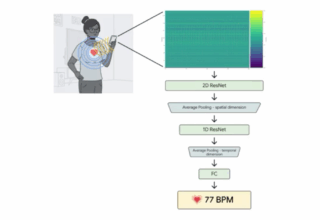 Even though it is only in the 17thcentury that the modern orthodontics was invented, dental braces can be dated back to the ancient times. Great historical figures like Aristotle and Hippocrates had devised various systems to help people in fixing and straightening their teeth. It is not the metal bands that people use today but early orthodontists made use of catgut, which is a natural fiber made out of animal intestines, in order to straighten teeth and close gaps in between them. However, fortunately this field of science has adopted more effective methods. The invention of braces can traced back to the early 19th century and ever since then, the teeth straightening system of popular choice for orthodontists and dentists around the world is that of the metal braces. It has a range of uses varying from malocclusions and overbites to gaps (diastemas) and other problems of aesthetic value. But they are abhorred by both children and adults alike, though their reasons are different.
Even though it is only in the 17thcentury that the modern orthodontics was invented, dental braces can be dated back to the ancient times. Great historical figures like Aristotle and Hippocrates had devised various systems to help people in fixing and straightening their teeth. It is not the metal bands that people use today but early orthodontists made use of catgut, which is a natural fiber made out of animal intestines, in order to straighten teeth and close gaps in between them. However, fortunately this field of science has adopted more effective methods. The invention of braces can traced back to the early 19th century and ever since then, the teeth straightening system of popular choice for orthodontists and dentists around the world is that of the metal braces. It has a range of uses varying from malocclusions and overbites to gaps (diastemas) and other problems of aesthetic value. But they are abhorred by both children and adults alike, though their reasons are different.
Adults do not like them because their cost is pretty high and children do not like them because they are not good to look at and cause a lot of discomfort. Every other wearer of metal braces has been called ‘metal mouth’ or ‘brace face’ and similar other uncomfortable names at some point or the other. Children can often be cruel and metal braces have been popular ammunition for them to launch an unprovoked attack on someone.
Alternatives to the traditional metal in forms of various cosmetic substitutes have been there for decades. For example, there are clearer plastic versions of it that is cemented not on the front but the backside of teeth and hence it can successfully avoid detection by observers. But the clear braces, in addition to being costlier, are inevitably more likely to cause irritation in the tongue as the wires and brackets are placed on the insides of teeth and close to the tongue.
Therefore, it is clear that braces have their limitations. The traditional system of braces is criticized for being unsightly and the rather modern solution to the problem is a cause of oral irritation, which might lead to cuts, infection, soreness etc. Luckily, there is one more option available for you that will not rely on metal wires and brackets and i.e. Invisalign.
The tooth straightening system that results in gradual shift of smile into its actual place, utilizing custom-made aligners is called Invisalign. Plastic which is almost undetectable and at the same time is more smooth and comfortable, makes up the aligners that is worn over the teeth until the completion of the treatment.
While regular adjustments have to be done with the traditional models made of metal depending on your progress, in order to expedite the process of straightening, the wires have to be periodically tightened in most cases but however, that is neither necessary nor possible when it comes to Invisalign. With Invisalign, the patient is provided with a new aligners set when required. You can just pop them in to wear them till your teeth shifts enough for you to go for another set of aligners, which could be as frequently as every two weeks.
Apart from its aesthetic merits, Invisalign also has functional superiority. With Invisalign, you can forget about food getting stuck in the brackets and wires, which adds to the bad reputation of braces. With the removable aligners, this system of convenience will allow you to eat anything you like at any time. Brush and floss can also be done with ease, which can be such a difficulty with traditional braces. Lastly, the Invisalign plastic trays owing to its smooth texture will hardly be an irritation for your cheeks, gums etc. as regular metal often is.


















